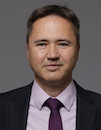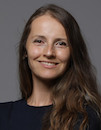Digital Communications
Data is displayed for academic year: 2023./2024.
Exercises
Laboratory exercises
Course Description
Explain the importance of digital communications. Provide basic knowledge about information and their baseband and passband transmission. Explain the concept of analog modulation techniques. Provide introduction to discrete modulations. Explain the functionality and characteristics of OFDM. Provide an overview of Spread Spectrum Systems.
Study Programmes
University graduate
[FER3-HR] Audio Technologies and Electroacoustics - profile
Elective Courses
(1. semester)
(3. semester)
Elective Courses of the Profile
(1. semester)
(3. semester)
[FER3-HR] Communication and Space Technologies - profile
(1. semester)
[FER3-HR] Computational Modelling in Engineering - profile
Elective Courses
(1. semester)
(3. semester)
[FER3-HR] Computer Engineering - profile
Elective Courses
(1. semester)
(3. semester)
[FER3-HR] Computer Science - profile
Elective Courses
(1. semester)
(3. semester)
[FER3-HR] Control Systems and Robotics - profile
Elective Courses
(1. semester)
(3. semester)
[FER3-HR] Data Science - profile
Elective Courses
(1. semester)
(3. semester)
[FER3-HR] Electrical Power Engineering - profile
Elective Courses
(1. semester)
(3. semester)
[FER3-HR] Electric Machines, Drives and Automation - profile
Elective Courses
(1. semester)
(3. semester)
[FER3-HR] Electronic and Computer Engineering - profile
Elective Courses
(1. semester)
(3. semester)
[FER3-HR] Electronics - profile
Elective Courses
(1. semester)
(3. semester)
[FER3-HR] Information and Communication Engineering - profile
Elective Courses
(1. semester)
(3. semester)
Elective Courses of the Profile
(1. semester)
Elective Coursesof the Profile
(3. semester)
[FER3-HR] Network Science - profile
Elective Courses
(1. semester)
(3. semester)
[FER3-HR] Software Engineering and Information Systems - profile
Elective Courses
(1. semester)
(3. semester)
Learning Outcomes
- Explain the idea of digital communications
- Estimate digital signal characteristic in baseband and passband transmission
- Compare analog modulations
- Analyze possibilities and limitations of different analog modulations
- Compare discrete modulations
- Analyze possibilities and limitations of different discrete modulations
- Explain the idea and applications of OFDM
- Explain the idea and applications of Spread Spectrum Systems
Forms of Teaching
Lectures
Lectures are conducted with the help of power-point presentations with explanations on the board. Lectures are available online in electronic form.
ExercisesSolving numerical examples.
Independent assignmentsDuring the semester, projects from the course area are planned. More complex tasks would be solved, most often with the use of software tools. Each project would be handled by smaller group of students.
LaboratoryLaboratory exercises are planned during the course. At the end of each exercise, the activity and understanding would be check.
Grading Method
| Continuous Assessment | Exam | |||||
|---|---|---|---|---|---|---|
| Type | Threshold | Percent of Grade | Threshold | Percent of Grade | ||
| Laboratory Exercises | 0 % | 10 % | 0 % | 10 % | ||
| Seminar/Project | 0 % | 10 % | 0 % | 10 % | ||
| Mid Term Exam: Written | 0 % | 30 % | 0 % | |||
| Final Exam: Written | 0 % | 30 % | ||||
| Final Exam: Oral | 20 % | |||||
| Exam: Written | 0 % | 60 % | ||||
| Exam: Oral | 20 % | |||||
Week by Week Schedule
- Digital communication system model, relation between baseband and passband communication
- Baseband communication model, shaping of signals. Optimal receiver. Nyquist's criterions. Effect of nonlinearity
- Transmission impairments. Line coding
- Differential coding. Modulation concept
- Amplitude modulation, frequency modulation
- Phase modulation, typical modulator circuits, typical demodulator circuits
- Amplitude-Shift Keying, Frequency-Shift Keying
- Midterm exam
- Phase-Shift Keying, Quadrature Amplitude Modulation (QAM), Minimum-Shift-Keying (MSK), GMSK
- Demodulation and probability of bit error rate, Gram Schmidt orthogonalization, comparison of modulation techniques. The quality of modulation
- OFDM - purpose and method of realization, channel equalization in OFDM systems, Peak to average power ratio problem. Interference analysis between subcarriers
- Adaptive modulation and capacity, Waterfilling algorithm, Multiple access method - OFDMA
- Direct Sequence Spread Spectrum (DSSS), Frequency Hopping Spread Spectrum (FHSS), Synchronization in spread spectrum systems. Power control. Code properties. Code selection. Code generation. Example of use in the UMTS system.
- Channel Equalization
- Final exam
Literature
Haykin, Simon (2001.), Communication Systems, John Wiley and Sons
Borivoj Modlic, Ivan Modlic (1995.), Modulacije i modulatori, Školska knjiga
For students
General
ID 222530
Winter semester
5 ECTS
L2 English Level
L1 e-Learning
45 Lectures
0 Seminar
15 Exercises
12 Laboratory exercises
0 Project laboratory
0 Physical education excercises
Grading System
Excellent
Very Good
Good
Sufficient


 Pristupačnost
Pristupačnost


